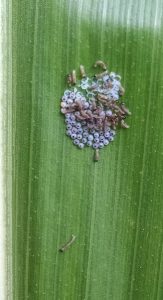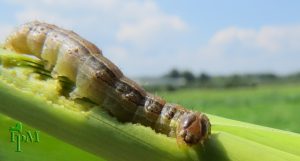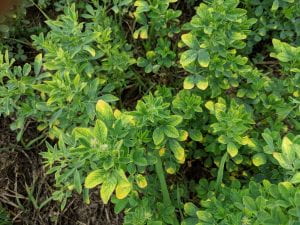Contents
Western Bean Cutworm
There were very high numbers of western bean cutworm moths caught this week in our pheromone traps across the state. These flights were primarily in Northern, NY. It is highly recommended that fields that are in pre-tassel be scouted. Note that this pest only causes potentially economic damage in corn for grain. This pest does not cause economic losses with silage. Make sure to look for egg masses and first instar larvae on the leaves. Once the larvae enter the ear they cannot be controlled with an insecticide.
For information on threshold and scouting, view the following website: https://cals.cornell.edu/field-crops/corn/insects-corn/western-bean-cutworm
Fall Armyworm
Fall armyworm catches are starting to pick up in the Hudson Valley. Fall armyworm is a generalist feeder and can be found in different crops. A year ago, this pest caused significant issues in alfalfa in the upper Hudson Valley. For more information, please view the following website: https://extension.entm.purdue.edu/fieldcropsipm/insects/fall-armyworm.php
Field Corn Pheromone Trapping Network Interactive Map
Potato Leafhopper in Alfalfa
Potato leafhopper damage has been reported in a few areas of the state. Remember if a field has yellowing it is best to harvest the field early. Make sure to monitor regrowth of the alfalfa for potato leafhopper. When harvesting make sure to take all the alfalfa in the field. If some of the alfalfa is left standing it will be a host for the potato leafhopper to re-infest the field as the plants start growing. New seedings are most susceptible to potato leafhopper as well.
For more information on thresholds and management, view the following video:
IPM for Potato Leafhopper on Alfalfa
Soybean Aphids on Soybeans
Soybean aphid populations have been low to moderate. It is best to get out and scout for aphids from the R1-R6 stage of growth. When scouting you might find soybean aphids as well as an array of natural enemies. These beneficials help keep aphid populations in check. For more information, view the following website:
https://cals.cornell.edu/field-crops/soybeans/insects-soybeans/soybean-aphid.
Defoliators in Soybeans
Both Japanese beetles and grasshoppers have been reported in soybeans. They feed on the leaflets of the plants. Very rarely do these insects cause economic losses in soybeans. Soybeans have the ability to compensate for leaf feeding on the plant.
For more information, please view the following websites:
Japanese Beetle
https://extension.entm.purdue.edu/fieldcropsipm/insects/soybean-japanese-beetle.php
Grasshoppers
https://extension.entm.purdue.edu/fieldcropsipm/insects/soybean-grasshopper.php








